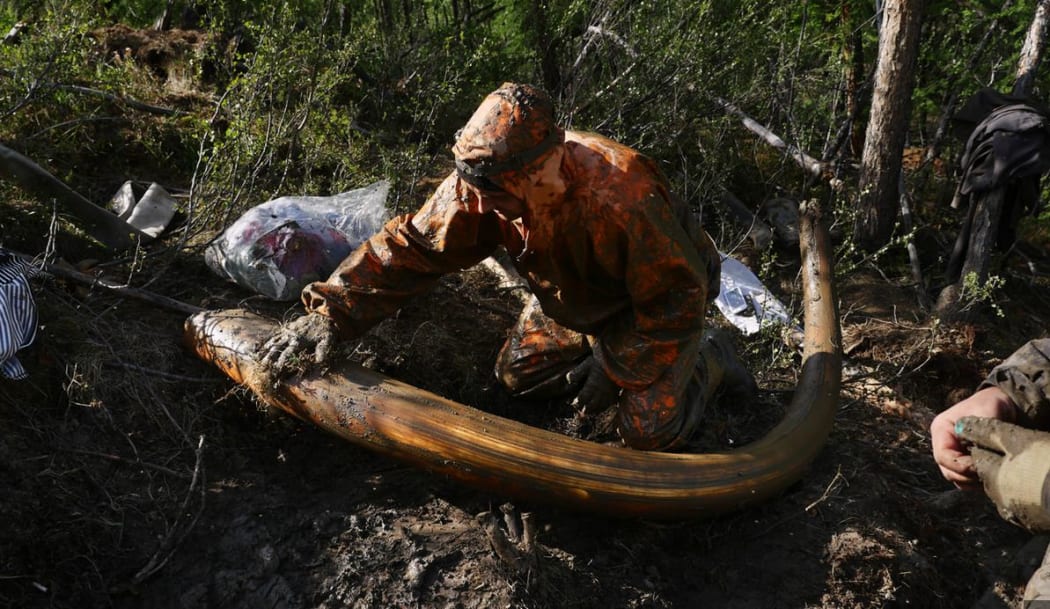They call it Siberia's white gold and the men risking their lives to dig up mammoth tusks are every bit as tough as the gold miners of the 19th century. Photographer Amos Chapple has documented their lives in an extraordinary photo-essay for Radio Free Europe.

Mammoth tusk prospector an image from Amos Chapple's photo essay Photo: Amos Chapple
Chapple, originally a newspaper photographer from Auckland, has worked all over the world. Now a globe-trotting photographer he has visited 67 countries.
He has worked full time shooting UNESCO world heritage sites; since then his work has been published in most major news titles around the world including The Guardian, Vanity Fair and The Atlantic.
His latest project is in Russia's Arctic north, where a new insidious kind of gold rush is happening - hidden from view the extraction of giant woolly mammoth tusks.
Chapple says the part of Russia where the tusking is taking place is a tough Wild West-like environment.
"The winters are so harsh, and it's cold for so long, that in the summers just the top layer of the soil thaws, so it becomes this kind of soggy extent of nothing."
He says the mammoth used to wander all over the northern hemisphere and the permafrost in this part of Siberia preserves their remains making this trade possible.
And the men that work there are a tough breed.
"When they actually get to work, boy the work is heavy and the days are long, and then when they hit the booze - chaos reigns."
The industry has always been there he says, but in recent years the things have escalated. the methods to find them have become more intensive too.
"The method they're using now, which is legal, is they're rigging up these very powerful water pumps designed for fire fighting, they extract water from the rivers then use the hoses to blast into the landscape.
"They have no idea where to look for these remains, they just blast away at the landscape and hope for the best."
And if they're lucky they can get rich; very quick. Chapple says anything up to $100,000 a week.
The tusks are bought by local agents and then, eventually, end up in China where they are carved by master carvers into objects which can sell for millions of dollars.
And the cost to the environment is high too. Chapple says once pristine rivers in the area are now silted up and the colour of "hot chocolate".

